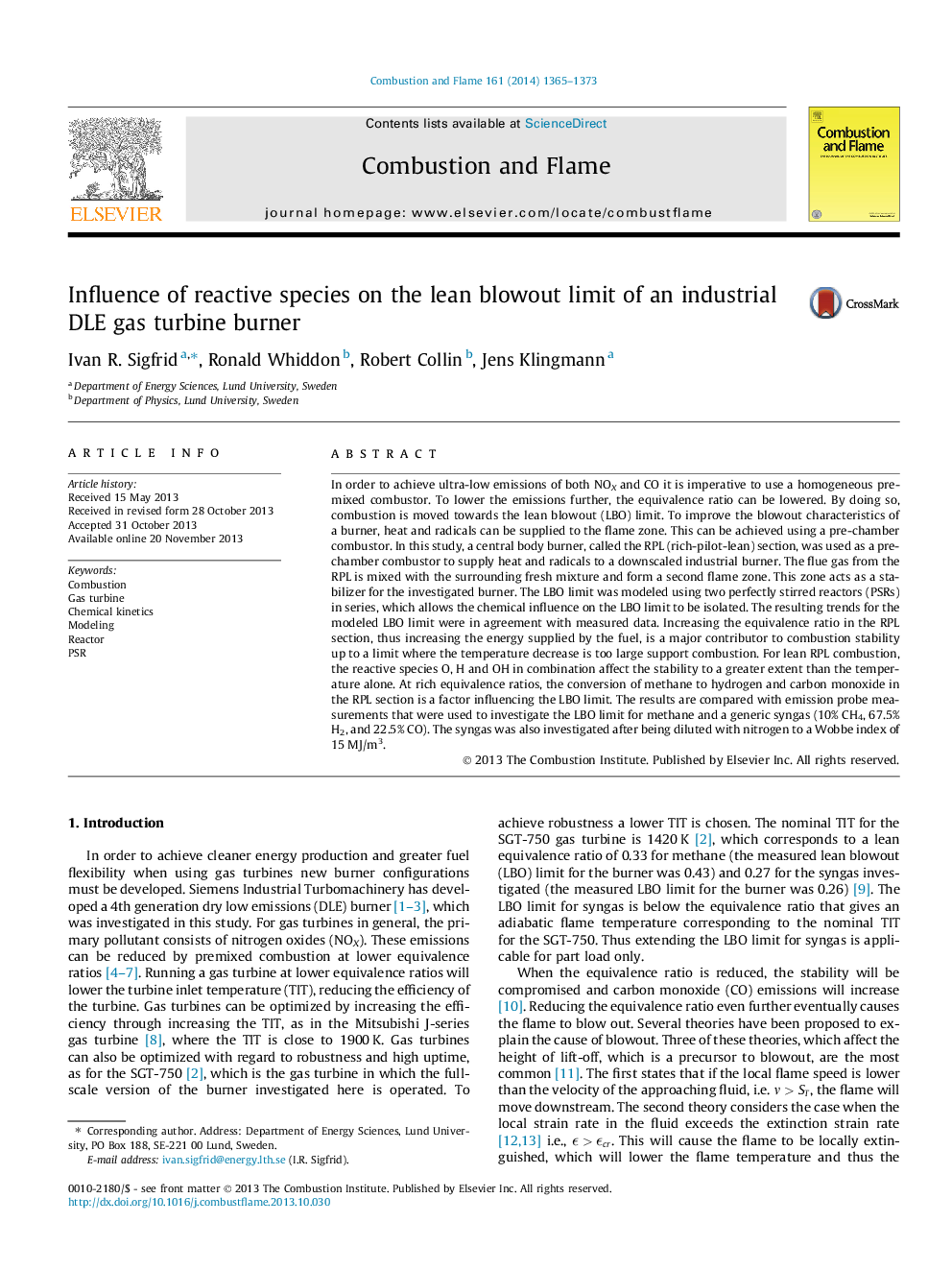| Article ID | Journal | Published Year | Pages | File Type |
|---|---|---|---|---|
| 168974 | Combustion and Flame | 2014 | 9 Pages |
In order to achieve ultra-low emissions of both NOX and CO it is imperative to use a homogeneous premixed combustor. To lower the emissions further, the equivalence ratio can be lowered. By doing so, combustion is moved towards the lean blowout (LBO) limit. To improve the blowout characteristics of a burner, heat and radicals can be supplied to the flame zone. This can be achieved using a pre-chamber combustor. In this study, a central body burner, called the RPL (rich-pilot-lean) section, was used as a pre-chamber combustor to supply heat and radicals to a downscaled industrial burner. The flue gas from the RPL is mixed with the surrounding fresh mixture and form a second flame zone. This zone acts as a stabilizer for the investigated burner. The LBO limit was modeled using two perfectly stirred reactors (PSRs) in series, which allows the chemical influence on the LBO limit to be isolated. The resulting trends for the modeled LBO limit were in agreement with measured data. Increasing the equivalence ratio in the RPL section, thus increasing the energy supplied by the fuel, is a major contributor to combustion stability up to a limit where the temperature decrease is too large support combustion. For lean RPL combustion, the reactive species O, H and OH in combination affect the stability to a greater extent than the temperature alone. At rich equivalence ratios, the conversion of methane to hydrogen and carbon monoxide in the RPL section is a factor influencing the LBO limit. The results are compared with emission probe measurements that were used to investigate the LBO limit for methane and a generic syngas (10% CH4, 67.5% H2, and 22.5% CO). The syngas was also investigated after being diluted with nitrogen to a Wobbe index of 15 MJ/m3.
